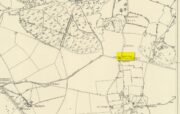Cross (destroyed): OS Grid Reference – TQ 828 099
Also Known as
- North End’s Cross
Archaeology & History
This long-lost stone cross should not be confused with the more recent one, erected by one Mr H. C. Richards in 1901 to commemorate some malarky about Edward VII. The one in this profile was much older than that, although both of them were erected close to each other. The older cross was found, said T.H. Cole (1884), “at the head of the Town, near All Saints’ Church.” Also known as the North End’s Cross, the old market was held here and close by were the gallows, the whipping post and the stocks.
References:
- Cole, Thomas H., The Antiquities of Hastings and the Battlefield, Hastings St Leonards Phil. Society 1884.
© Paul Bennett, The Northern Antiquarian
